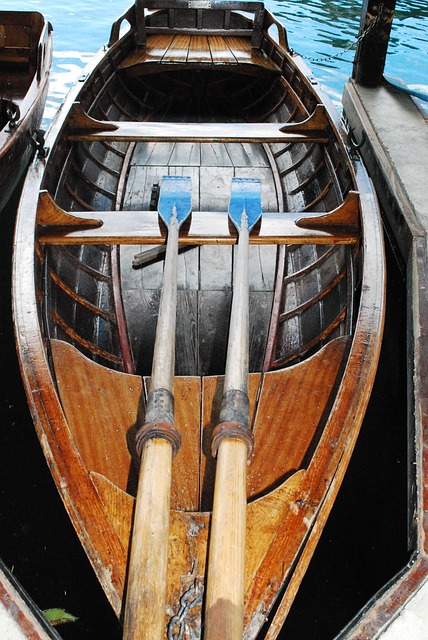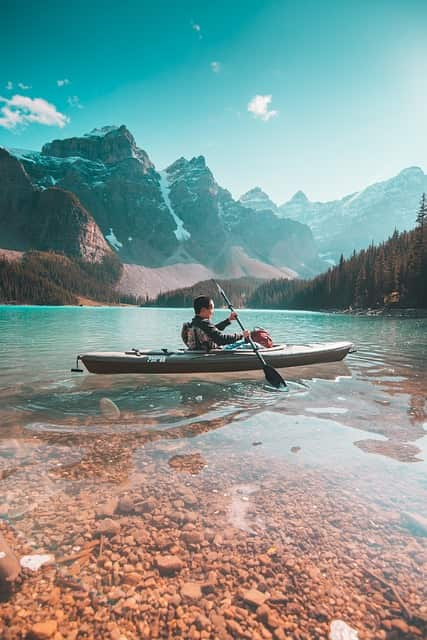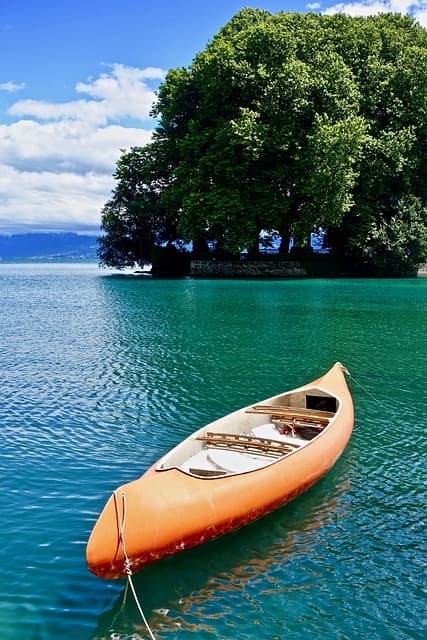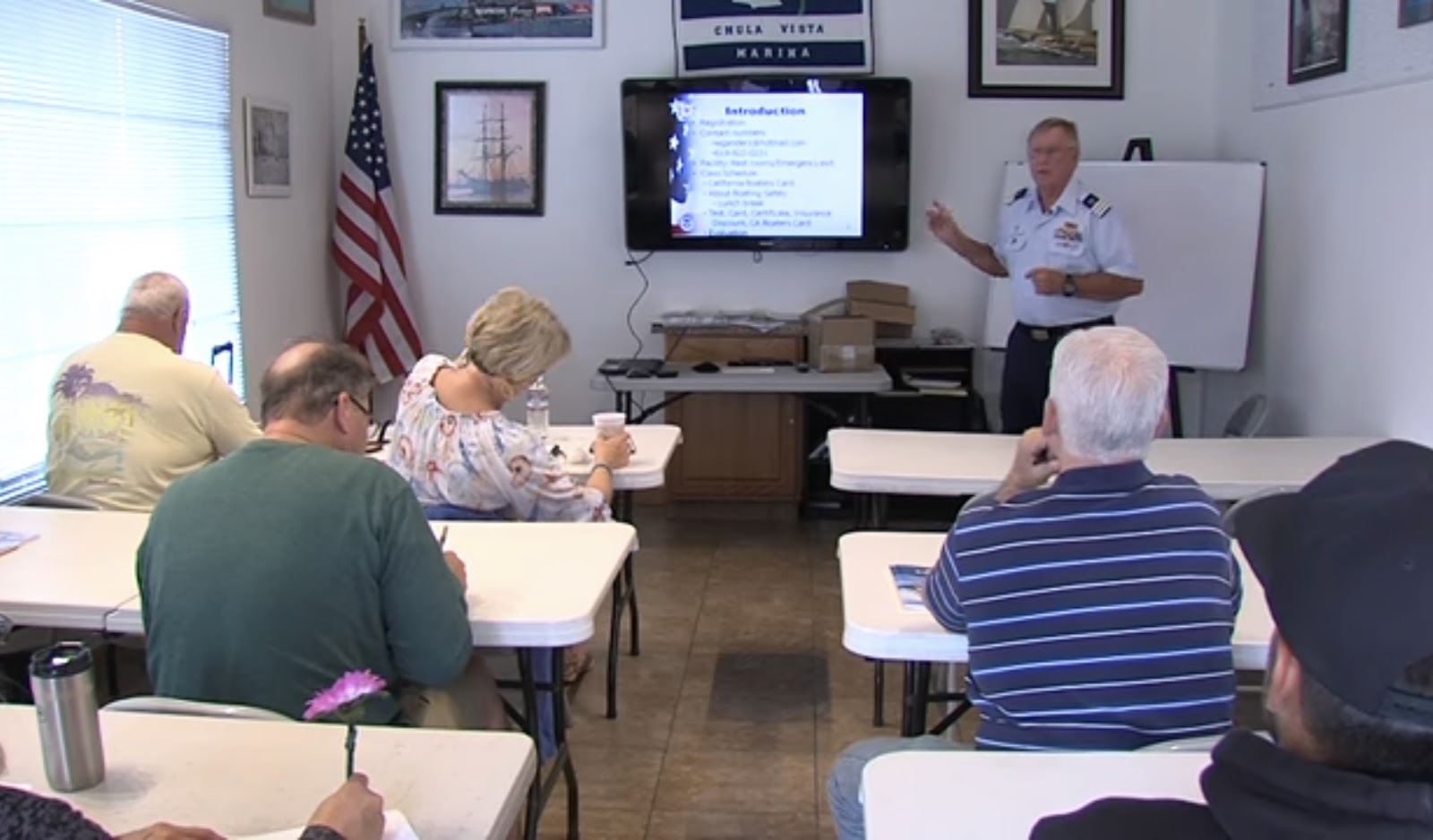In the realm of California’s watercraft governance, the regulatory bodies have come to embrace a less-is-more philosophy in managing the ownership of water vessels by its citizens. These governing bodies acknowledge that simplicity is key.
When it comes to canoe and kayak laws in California, a distinctive approach prevails. Non-motorized vessels enjoy exemption from the registration process. However, this exemption comes with the obligation to carry essential safety gear onboard, including a life jacket for each individual and a sound-emitting device like a whistle.
Navigating California’s Canoeing and Kayaking Laws
At the helm of overseeing California’s intricate boating regulations stands the California Division of Boating and Waterways (DBW), a prominent division nestled within the folds of the California Natural Resources Agency. This organization’s steadfast commitment to maintaining a vigilant watch over the waters ensures that the harmony between boating and compliance is upheld.
This crucial responsibility is not shouldered alone. A cohesive partnership emerges, as the State Police officers and game and fish Wardens stride forward in tandem with the DBW. Their collective role extends far beyond conventional enforcement, encompassing the intricate realm of regulations that govern not only boating as a whole but also the nuances that define the interactions with canoes and kayaks.
United by their shared objective of preserving safety, compliance, and the intrinsic beauty of California’s waterways, these entities become the guardians of harmony upon the waters. As the sun’s rays dance upon the waves, the collective efforts of the DBW, State Police officers, and game and fish Wardens reflect in the gentle ripples—mirroring the commitment to responsible navigation that echoes throughout the state’s boating regulations.
To Register or Not to Register
For canoes that are human-powered and less than 13 feet in length, registration is not required. Moreover, if your canoe or kayak lacks motorized propulsion, there is no necessity to title your vessel. However, any motorized watercraft must be both registered and titled.
License and Operator Requirements
Operating a human-powered canoe or kayak doesn’t demand registration. Operating one does not entail any certification or special education. However, by 2025, a safety certification card will be mandated for all California residents operating motorized vessels.
Navigating the Waters of Regulation
A clear restriction stands: no one under the influence of alcohol or drugs is permitted to operate a motorboat, including canoes and kayaks. Violating this regulation with a blood alcohol content of 0.08% or higher constitutes a breach of boating under the influence (BUI) laws.
Emergency equipment is a paramount consideration. Each vessel must possess a U.S. Coast Guard-approved life jacket for every person aboard. Additionally, a white navigation light is required during low visibility conditions, and a sound-producing device like an emergency whistle is advised.
Licensing and Registration Queries
You can paddle your canoe or kayak in California without the burden of licensing or registration, as long as it’s not motorized. If your canoe does boast a motor, however, you can avoid registration by using it within California for less than 120 days after bringing it from a state where it’s legally operated.
Navigating the Title Question
Regarding titling, the California boating laws appear silent on the subject of non-motorized vessels. Nevertheless, if your canoe is motorized and necessitates registration, it will also demand titling.
Paddling Along with Motorized Vessels
Motorized canoes necessitate registration, regardless of the type of motor or its power level. Displaying the Certificate of Number and corresponding decals/numbers is required, subject to inspection by an enforcement officer.
Paddling, Motorized or Not
Age is no obstacle when it comes to operating a canoe or kayak with an electric trolling motor in California. As long as competence is maintained, anyone can legally operate such a watercraft. There are no age limitations for motorized canoes or kayaks with motors under 15 hp.
California law is progressively rolling out stricter regulations for boater certification. By 2025, all California boaters will need a Boater Safety Card, with the phases as follows:
- January 1, 2018: Persons 20 years of age or younger;
- January 1, 2019: Persons 25 years of age or younger;
- … and so forth, culminating in all human beings regardless of age by January 1, 2025.
Acquiring a boater safety course is a prudent step for a safer boating venture.
Navigating the Waters of Sobriety: California’s Stance on Alcohol and Boating
Among the idyllic waterways that crisscross California’s landscapes, a distinct thread weaves through the narrative of boating— the delicate relationship between alcohol and nautical navigation, with legal consequences echoing like ripples on the water’s surface. Operating a watercraft while under the influence carries substantial legal implications within the Golden State’s jurisdiction.
- The act of commandeering a water vessel under the influence of alcohol constitutes a violation of state law. A boater crosses the threshold into “intoxication” territory when their blood alcohol content (BAC) scales the height of 0.08% or beyond. However, the realm of legal ramifications reaches farther, encompassing a surprisingly low threshold. A mere trace of 0.01% BAC can label someone under the age of 21 as culpable for boating while intoxicated (BWI);
- Interestingly, the implications branch beyond alcohol alone. The realm of substances broadens to include prescription medications, narcotics, and various impairing agents. Should a boater fail a field sobriety test or exhibit actions indicative of intoxication, irrespective of the substance involved, charges can ensue, weaving an intricate web of accountability and responsibility.
In this confluence of safety, legality, and personal responsibility, California’s waters stand as a realm where adherence to sobriety ensures not only compliance with the law but also fosters a culture of mindful boating. As boats glide through the water, a vigilant adherence to the state’s stance on alcohol and intoxication ensures that the serene waters remain a sanctuary of safety and respect for all.
Navigational Safeguard Essentials in California
Each state upholds its unique stance on life jacket requirements. An adept swimmer herself, the narrator nonetheless habitually dons a personal flotation device (PFD) as a safety precaution. A sense of responsibility drives this choice.
California’s waterways necessitate a roster of equipment for lawful and secure navigation. Notably, a law-mandated readily accessible and wearable PFD, typified by Type I, II, III, or a wearable V, must be carried on board every canoe or kayak. While throwable flotation devices remain optional for these crafts, the presence of a manual bailing device is not officially obligatory, yet is highly advised.
Lighting the Path to Compliance
Within the intricate fabric of California’s boating regulations, a practical mandate emerges concerning visual distress signals (VDS). Notably, this requirement exclusively applies to Federally-controlled waters, underscoring a need for heightened visibility in particular areas. Yet, an intriguing dimension surfaces when exploring the realms of unpowered vessels during the delicate transition between sunset and sunrise.
- For those navigating unpowered vessels during the twilight hours, a vital accessory takes center stage—the bright white lantern. This essential tool radiates with luminosity, serving as a beacon to avert potential collisions. Anchored vessels find their role in the tapestry of night navigation, as non-designated mooring areas must adorn themselves with an all-encompassing white light, subtly contributing to the nocturnal symphony;
- Moreover, the state extends its guidance, advocating for the presence of bow red/green lights on kayaks and canoes during moonlit expeditions. This recommendation is accompanied by a treasure trove of suitable and cost-effective lighting options, inviting boaters to illuminate their paths while treading upon the tranquil waters.
In essence, the mandate for visual distress signals and the thoughtful recommendations for nocturnal lighting form a constellation of safety and guidance. They stand as luminous reminders that the waters remain enchanting, even under the cloak of night, beckoning boaters to embrace responsible navigation while they create shimmering reflections on California’s watery canvas.
Pondering Fire Extinguisher Requirements
In the realm of canoes and kayaks, fire extinguishers stand as rare, if not entirely absent, companions. Practicality reigns supreme, as the notion of combatting flames within these crafts is met with simple yet effective solutions—a splash of water or a controlled capsize. This distinctive exemption underlines the rational approach to regulations, reflecting an understanding of the unique nature of these vessels and the environments they navigate.
As boaters set forth on California’s watercourses, they embark on a voyage that beautifully melds compliance with the captivating allure of their surroundings. The tapestry of safety, woven through meticulous guidelines and mandates, converges seamlessly with the breathtaking natural landscapes that envelop them. The gentle lapping of waves and the whisper of winds blend harmoniously with the symphony of responsible navigation, a testament to the symbiotic relationship between boaters and the waters they traverse.

In this unique and shared journey, the nuances of adherence to regulations are gracefully interwoven with the enchanting beauty of the environment. The tale that unfolds is one of responsibility, respect for nature, and the art of seamlessly coexisting with the waterways. As paddles dip into the tranquil waters, boaters become both participants and stewards, crafting a narrative where safety and the preservation of the extraordinary blend harmoniously to enrich the boating experience.
Navigating California’s Waters: A Tale of Safety and Responsibility
As our journey through California’s boating regulations draws to a close, a comprehensive understanding of the state’s watercraft governance emerges. The intricate web of rules and guidelines forms a protective shield, ensuring not only the safety of boaters but also the preservation of the state’s stunning aquatic landscapes.
To wrap up
From the cautious approach to alcohol consumption while operating watercraft to the meticulous equipment requirements that go beyond legal obligations, California’s regulations are a testament to the commitment to safety and responsible boating. The blend of mandatory life jacket provisions, visual distress signal mandates for specific waters, and the thoughtful considerations for lighting during nocturnal adventures weaves a narrative of vigilance and preparation.
In the backdrop of California’s waterways, compliance and responsibility shine as guiding stars. The intricate fabric of regulations serves as a reminder that every boater is not merely a captain of their vessel but also a guardian of the natural beauty that surrounds them. The balance between enjoying the serenity of the waters and upholding the laws that preserve that serenity underscores the significance of these regulations.
In conclusion, as boaters navigate California’s waters, they embark on a voyage that intertwines respect for the law with reverence for nature. The shared goal of every boater, whether in a canoe or kayak, motorized or not, is to traverse these waters with awareness, caution, and a deep appreciation for the harmonious blend.



